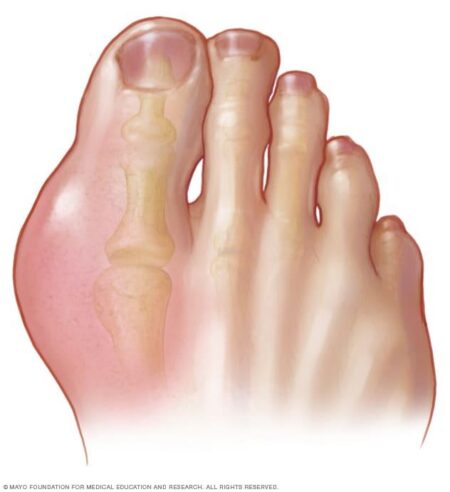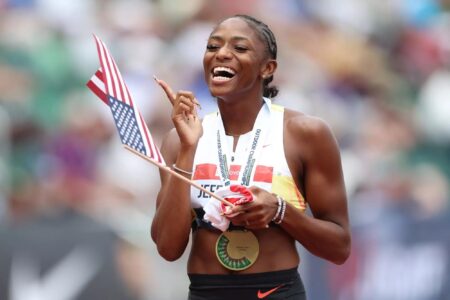Exploring the Kinematics of Maximal Speed Sprinting: A Breakthrough Study on Speed, Leg Length, and Step Characteristics
In the world of athletics, understanding the intricacies of human movement can unlock the secrets to performance enhancement and injury prevention. A groundbreaking study published in Frontiers delves deep into the kinematics of maximal speed sprinting, shedding light on how varying running speeds, leg lengths, and step characteristics contribute to elite performance on the track. As sprinting techniques continue to evolve, this research not only highlights the key biomechanical factors that define top-tier sprinters but also poses critical questions about training regimens and athlete growth. With insights that could reshape coaching strategies and inform future scientific exploration, this study positions itself at the forefront of sports science, appealing to athletes, coaches, and researchers alike. Join us as we unpack the study’s findings and their implications for the next generation of sprinters.
Understanding the Impact of Leg Length on maximal Speed Sprinting Performance
the relationship between leg length and maximal speed during sprinting has drawn attention from researchers aiming to decode the biomechanics behind elite performance. Athletes with longer legs may benefit from an extended stride length, allowing for greater ground coverage with each step. This potential advantage, however, must be carefully weighed against factors such as muscle power, leg strength, and running technique. Shorter runners,while potentially at a disadvantage in terms of stride length,can offset this with faster turnover rates,making the dynamics of leg length and speed more intricate than a simple one-to-one correlation. Understanding how these elements interplay is crucial for coaches and athletes alike in optimizing training regimens and competition strategies.
Recent studies have highlighted key kinematic characteristics that vary with leg length, shedding light on how they influence sprinting speed.Measurements typically include variables such as stride frequency, stride length, and ground contact time. According to the research, it has been observed that elite sprinters usually possess a unique combination of these attributes tailored to their specific leg length. the following table summarizes key differences in kinematic performance factors across varying leg lengths:
| Leg Length | Average Stride Frequency (Hz) | Average Stride Length (m) | Ground Contact Time (ms) |
|---|---|---|---|
| Short | 4.5 | 1.9 | 150 |
| Medium | 4.2 | 2.2 | 160 |
| Long | 4.0 | 2.5 | 170 |
this data underscores the complexity of sprinting biomechanics, highlighting that while longer legs may allow for longer strides, they do not guarantee superior speed. Rather,the optimal performance emerges from an athlete’s ability to harness their unique leg length in conjunction with other physical attributes and tactical execution on the track.
Analyzing Step Characteristics to Enhance Sprinting Efficiency
Understanding the intricacies of step characteristics is crucial for enhancing sprinting efficiency. Key factors such as step frequency, step length, and contact time play meaningful roles in a sprinter’s performance. By analyzing these attributes, athletes can identify optimal strategies tailored to their unique physical profiles. For instance, runners with longer legs may benefit from maximizing step length, while those with shorter legs might focus on increasing their step frequency to maintain higher velocities. Monitoring and adjusting these factors can lead to improved acceleration and sustained speed through the sprinting cycle.
The impact of trained kinematics is evident in elite sprinters compared to recreational athletes. Studies indicate that elite competitors exhibit reduced ground contact times and increased vertical force request, which facilitates quicker acceleration phases. Additionally, the biomechanics of sprinting show a noteworthy correlation between step characteristics and the athlete’s overall performance metrics. To provide a clearer picture, the table below outlines notable distinctions in key kinematic parameters between varying performance levels:
| Group | Average Step Length (m) | Average Step Frequency (Hz) | Ground contact Time (s) |
|---|---|---|---|
| Elite Sprinters | 2.7 | 4.5 | 0.08 |
| Amateur Sprinters | 2.4 | 4.0 | 0.12 |
Optimizing Running Speed for Improved Athletic Outcomes in Sprinting
Recent advancements in the understanding of sprinting mechanics indicate that optimizing running speed involves a multifaceted approach.Analyzing the interplay between running speed, leg length, and step characteristics reveals key insights into athletic performance. Elite sprinters exhibit distinct kinematic patterns that differ notably from recreational runners, emphasizing the importance of tailored training regimens. Variables such as stride frequency, stride length, and ground reaction forces determine not only the pace but also the effectiveness of the sprinting technique.
to further illustrate these differences, below is a summary table showing the average kinematic characteristics observed in elite sprinters compared to recreational athletes:
| Attribute | Elite Sprinters | Recreational Runners |
|---|---|---|
| Average Stride length | 2.5 meters | 1.8 meters |
| Average Stride Frequency | 5.0 Hz | 4.2 Hz |
| Peak Ground Reaction Force | 4.0 times body weight | 2.5 times body weight |
Focusing on these elements can significantly enhance performance outcomes for athletes. Key training strategies may include exercises aimed at improving both explosive power and speed endurance, along with adjustments in technique that refine stride mechanics. Coaches and athletes are encouraged to monitor these kinematic factors closely, using advanced motion capture technology and biomechanics analysis to implement targeted interventions that yield measurable improvements in sprinting efficiency.
Concluding Remarks
the exploration of kinematics in maximal speed sprinting reveals a complex interplay between running speed, leg length, and step characteristics that highlights the intricacies of athletic performance. The findings presented in “Kinematics of Maximal Speed Sprinting With Different Running Speed, Leg Length, and Step Characteristics” contribute valuable insights into how these variables interact to optimize running efficiency and speed. As researchers continue to unravel the mechanics behind elite sprinting, understanding these factors could pave the way for enhanced training protocols and injury prevention strategies among athletes. The implications of this research extend beyond the track, offering potential benefits for coaches, sports scientists, and aspiring sprinters alike. As the dialog around athletic performance evolves, studies like these are essential in shaping the future of sprinting research and training techniques.





